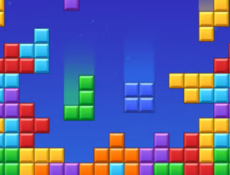Pixel Dash is a fast-paced arcade platform game that challenges players with short levels filled with obstacles and hazards. The goal is to guide a small pixel-like character across platforms, spikes, and traps while maintaining precise timing. The design emphasizes quick reactions, with each mistake sending the player back to the start of the stage. Its simple visuals contrast with the intensity of gameplay, creating a rhythm of trial, error, and improvement.


Pixel Dash
Advertisement
Advertisement
Pixel Dash is a fast-paced arcade platform game that challenges players with short levels filled with obstacles and hazards. The goal is to guide a small pixel-like character across platforms, spikes, and traps while maintaining precise timing. The design emphasizes quick reactions, with each mistake sending the player back to the start of the stage. Its simple visuals contrast with the intensity of gameplay, creating a rhythm of trial, error, and improvement.
Gameplay Structure
The main loop of Pixel Dash focuses on running, jumping, and avoiding obstacles. Levels are compact but packed with traps that test accuracy and rhythm. The character moves quickly, forcing players to react almost instantly to what appears on screen. Because stages are short, failure is not punishing but instead encourages repeated attempts. Over time, players learn patterns and refine their skills until they can clear each section smoothly.
Key Features Of The Game
- Short but challenging platforming levels
- Pixel-based art style with simple but clear visuals
- Fast-paced gameplay focused on reflexes
- Frequent retries that encourage mastery
- Increasing difficulty across progressive stages
Difficulty And Progression
Each stage introduces new mechanics, such as moving platforms, timed traps, or environmental hazards that demand different strategies. Early levels serve as tutorials, but later stages require precise timing and near-perfect execution. The gradual increase in difficulty keeps the challenge fresh, ensuring that players must adapt to new patterns instead of relying only on memorization. This structure makes progress feel rewarding, as every completed stage reflects improved skill.
Visual And Audio Design
Pixel Dash uses minimalist pixel art to create environments that are easy to read during high-speed gameplay. The simplicity ensures that players can focus entirely on obstacles and timing. The soundtrack usually features energetic loops that match the quick pace of levels, while sound effects provide feedback for jumps, collisions, and successful completions. The overall presentation prioritizes clarity, supporting the demanding nature of the platforming.
Replay Value
Replayability comes from the precision-based design, as players can attempt to complete stages faster or with fewer mistakes. Some levels may encourage speedrunning, while others challenge players to survive long sequences of traps. The short structure makes it easy to replay multiple times, aiming for cleaner and quicker completions. This balance of accessibility and depth ensures that Pixel Dash remains engaging across repeated sessions.




















